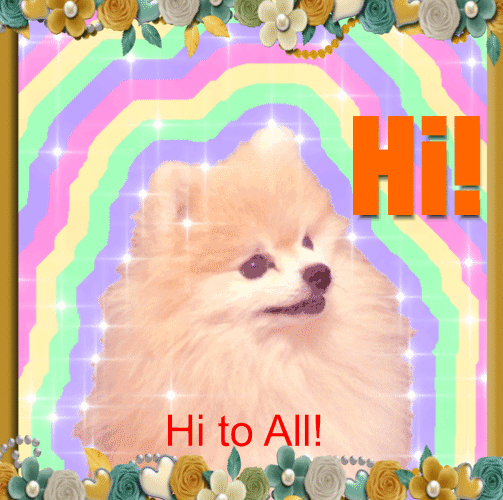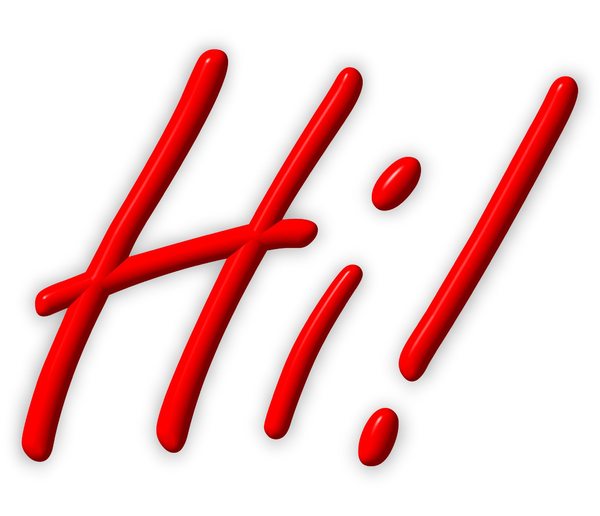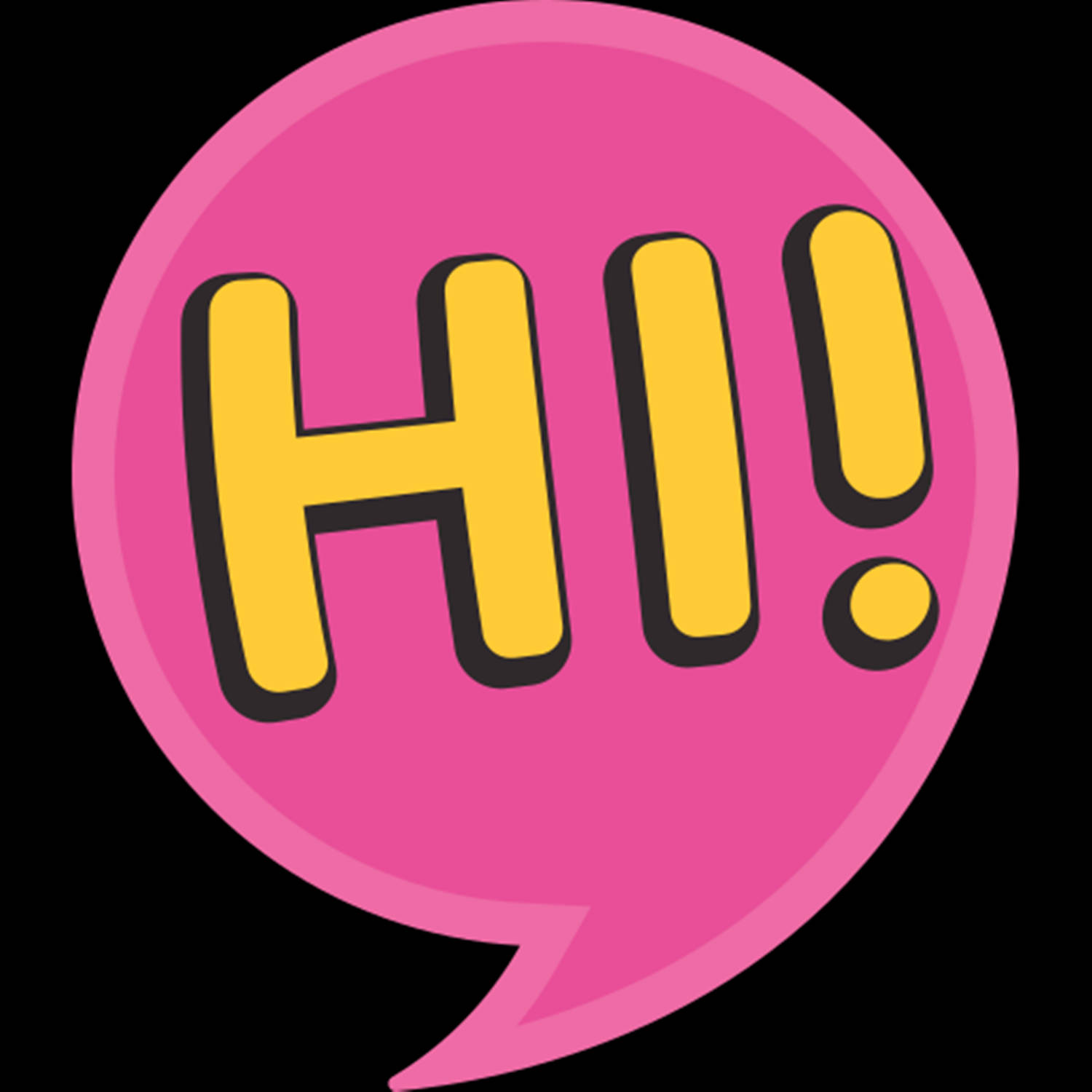Saying Hi In Spanish - Your Guide To Warm Greetings
Knowing how to say hello in another language can make a real difference, opening up conversations and helping you connect with people. It is, you know, often the very first thing you learn, and for good reason. A simple greeting can put someone at ease, show you care to communicate, and start a friendly chat. This small act of connection really does make a big impact on how you are seen and how well you can talk with others.
When you begin learning Spanish, a very common and very useful word you will hear is "hola." This word is, more or less, the standard way to say "hello" or "hi" across all Spanish-speaking places. It is quite simple to pick up, and its straightforward nature means you can use it in almost any setting, whether you are talking to someone you just met or someone you have known for ages. It is, basically, a reliable way to start any interaction.
However, saying "hi" in Spanish is actually a bit more than just "hola." There are, you see, many other ways to greet someone, depending on the time of day, who you are talking to, and what the situation calls for. Getting a handle on these different greetings can make your Spanish sound much more natural and help you fit in better with native speakers. This guide will, sort of, walk you through the various ways to say hello, making sure you feel ready for any conversation.
- 4th Date Ideas
- Kimmy Granger Ill Protect You
- Agassi Shields Wedding
- Baby Bearded Dragon
- Margaret Galvin Hidden Valley Road
Table of Contents
- What's the Most Common Way to Say Hi in Spanish?
- The Sound of "Hola" - Getting Your Hi in Spanish Just Right
- Where Did "Hola" Come From?
- Are There Other Ways to Say Hi in Spanish?
- Greeting Friends - Informal Hi in Spanish
- Talking to New People - Formal Hi in Spanish
- How Do You Respond When Someone Says Hi in Spanish?
- A Quick Look at Saying Hi in Spanish
What's the Most Common Way to Say Hi in Spanish?
The simplest and most widely recognized way to say "hi" in Spanish is, without a doubt, "hola." This word serves as the main greeting and can be used in almost any circumstance. It is neither too formal nor too casual, which means you can pretty much use it with anyone, from a stranger on the street to a close family member. Think of it as your go-to word for starting a chat, really. It is, you know, the first word many people learn when they start to pick up Spanish, and it is a good one to know because it works in so many different places. This word is, in a way, a universal key for opening conversations across the Spanish-speaking world.
Because "hola" is so generally accepted, it is used in every country where Spanish is spoken. You do not have to worry about it sounding odd or out of place in Mexico, Spain, Argentina, or any other nation where people speak Spanish. It is, sort of, a linguistic bridge that connects everyone. This makes learning it quite valuable, especially if you are just beginning your language learning adventure. Knowing this single word can make you feel a lot more comfortable when you are trying to speak with others, which is, actually, a great feeling to have.
While "hi" in English might feel a little more relaxed than "hello," "hola" in Spanish works for both. It is a word that holds a lot of flexibility. So, whether you are aiming for a quick "hi" or a more traditional "hello," "hola" will fit the bill. It is, basically, a word that adapts to what you need it for, making it very convenient. Many times, people will add other little phrases right after "hola" to make the greeting even more complete, which we will talk about a little later on.
The Sound of "Hola" - Getting Your Hi in Spanish Just Right
When you say "hola," there is one very important thing to keep in mind about its sound. In Spanish, the letter 'h' is almost always silent. This means you do not make a sound for the 'h' at the start of "hola." Instead, you say it as if it were spelled "ola." It is, you know, a common point of confusion for those just starting out. Getting this small detail right can make your Spanish sound much more natural, and people will understand you more easily. So, really, practice saying it without that 'h' sound.
Just be careful not to mix it up with the actual word "ola," which means "wave," like an ocean wave. While they sound the same, their meanings are very different, obviously. You would not want to accidentally tell someone "wave" instead of "hello," would you? It is, actually, a common little linguistic quirk that new learners sometimes trip over. The context usually helps sort it out, but knowing the difference in spelling and what each word means is, basically, a good idea for anyone trying to speak Spanish.
Getting the pronunciation of "hola" down pat is, in some respects, a very simple step that builds confidence. When you can say this most common greeting correctly, you feel a bit more ready to try out other words and phrases. It is, sort of, like getting the first piece of a puzzle to fit perfectly. This tiny bit of knowledge, honestly, makes a big difference in how comfortable you feel when you open your mouth to speak Spanish. And that comfort, you know, helps you keep going.
Where Did "Hola" Come From?
The word "hola" in Spanish, which we use to mean "hello" or "hi," has, actually, a rather interesting story about where it came from. Its linguistic beginnings can be traced back through the way the Spanish language has changed over a long time. Spanish, like many of the languages we call "Romance languages," has its deep roots in Latin. This connection to Latin is, you know, a common thread that runs through French, Italian, Portuguese, and Romanian as well.
The word "hola" is thought to have come from an old interjection, a word or sound people made to get someone's attention, or to show surprise. It is believed to have developed from the Old French word "hola," which was used as a call to stop or to draw attention. This Old French word, in turn, probably came from "ho!" (an exclamation) and "là" (meaning "there"). So, in a way, it was like saying, "Hey, over there!" or "Stop!" It is, basically, a word that has traveled quite a distance through history.
Over time, as languages changed and mixed, this attention-grabbing sound made its way into Spanish. Its meaning slowly shifted from a call to stop or to get attention to a general greeting. This is, you know, a pretty common thing that happens with words; their uses can change quite a bit over the centuries. So, when you say "hola" today, you are, in a sense, using a word that has a long and rather storied past, stretching back to ancient times and various parts of Europe. It is, really, a cool thought to have when you greet someone.
Are There Other Ways to Say Hi in Spanish?
Yes, absolutely! While "hola" is a fantastic starting point for saying "hi" in Spanish, it is just the beginning. There are, actually, many other ways to greet someone, and picking the right one often depends on the time of day, the specific situation you are in, and how well you know the person you are talking to. Getting a feel for these different greetings can make your conversations flow more naturally and show that you have a better grasp of the language. It is, you know, a step toward sounding more like a native speaker.
For instance, just like in English where you might say "good morning" or "good evening," Spanish has similar phrases. These time-specific greetings are very common and show a nice touch of politeness. Learning these can really help you fit into different social settings. It is, basically, about choosing the right words for the right moment. Knowing these variations means you are not just saying "hello," but you are saying a "hello" that fits the exact time and place, which is, in some respects, a very thoughtful thing to do.
Some of these other greetings are more common in very casual settings, like when you are talking with close friends or family. Others are better suited for more formal situations, such as when you are speaking with someone older, a professional contact, or someone you do not know very well. This guide will, sort of, teach you how to say "hi" in different places and for different reasons. You will find out when to use "hola," "buenos días," "qué tal," and more, along with examples and handy tips. There are, apparently, at least 26 ways to say "hi" in Spanish, each with its own feel and background, and some even say there are over 76 classic and creative ways to say it!
Greeting Friends - Informal Hi in Spanish
When you are talking with people you know well, like your friends, family members, or someone your own age, you can use informal ways to say "hi" in Spanish. These greetings tend to be more relaxed and friendly. One very common informal greeting is "cómo estás?" which means "how are you?" This is, you know, a great follow-up to "hola" or can even be used on its own. It shows you care about the other person's well-being, which is, basically, a nice touch in any language.
Another popular informal phrase is "qué tal?" This one is a bit like saying "what's up?" or "how's it going?" in English. It is very versatile and casual. You can use it with almost anyone you have a relaxed relationship with. It is, in a way, a quick and easy way to check in with someone without being too formal. People use it all the time in everyday chats, so getting comfortable with it will make your Spanish sound much more natural, really.
Then there is "qué pasa?" which translates to something like "what's happening?" or "what's going on?" This is, actually, a very casual greeting, often used among younger people or very close friends. It is a bit more direct than "qué tal?" and suggests a more familiar connection. Knowing when to use these informal greetings, and which ones to pick, is a big part of sounding like a native speaker. It is, you know, about understanding the social cues and how they affect the words you choose. This helps you build stronger connections with people you meet.
Talking to New People - Formal Hi in Spanish
When you are talking to someone you do not know well, someone older than you, or someone in a position of respect, it is better to use formal ways to say "hi" in Spanish. This shows politeness and respect, which is, honestly, very important in many Spanish-speaking cultures. The most common formal greetings are based on the time of day. For example, in the morning, you would say "buenos días." This means "good morning." It is, basically, a very standard and polite way to start the day's interactions.
As the day moves into the afternoon, you would switch to "buenas tardes." This translates to "good afternoon" or "good evening," typically used from around noon until sunset. Then, once it is dark, or late in the evening, you would use "buenas noches," which means "good night" or "good evening." This phrase can be used both as a greeting and as a way to say goodbye at night. It is, you know, a very common practice to use these time-specific greetings in formal situations, or even in casual ones when you want to be extra polite.
A key difference in formal versus informal talk is how you say "you." In informal settings, you use "tú" for "you." But in formal situations, you use "usted." This change in pronoun affects how verbs are put together, so it is a very important thing to get right. For example, while you might ask a friend "cómo estás?" (using the "tú" form), you would ask someone you are showing respect to "cómo está usted?" (using the "usted" form). This little change, really, makes a big difference in how your words are received and shows that you understand the social norms. It is, apparently, a subtle but powerful way to show respect in Spanish.
How Do You Respond When Someone Says Hi in Spanish?
Knowing how to say "hi" in Spanish is one thing, but knowing how to answer back is just as important for a real conversation. When someone greets you, your response can keep the chat going and show that you are paying attention. If someone says "hola," a simple "hola" back is always fine. It is, you know, the easiest and most direct way to acknowledge their greeting. This is, basically, a universal answer that works every time.
If someone asks "cómo estás?" (how are you?), a common answer is "bien, gracias" (good, thank you). You can then, sort of, turn the question back to them by adding "y tú?" (and you? - informal) or "y usted?" (and you? - formal). This shows you are interested in their well-being too. For example, "Hola, ¿cómo estás?" "Bien, gracias, ¿y tú?" This little exchange is, really, a fundamental part of many Spanish conversations. It is, in a way, a very polite way to keep the conversation flowing.
For "qué tal?" or "qué pasa?", you can also say "bien" or "todo bien" (all good). Sometimes, people might just say "nada" (nothing) or "aquí andamos" (we're doing alright), especially in very casual settings. The key is to respond in a way that matches the tone of the greeting you received. If they are casual, your answer can be casual. If they are formal, your answer should be a bit more formal. This helps you, you know, fit into the conversation naturally. Learning these common responses is a very good step in making your Spanish feel more complete and natural.
A Quick Look at Saying Hi in Spanish
This guide has walked you through the many ways to say "hi" in Spanish, from the very common "hola" to greetings that change with the time of day and the person you are talking to. We have looked at how "hola" is used everywhere and how its 'h' is silent. We also saw that "hola" has old roots, coming from Latin and an Old French call. You have, you know, learned that saying "hi" in Spanish is more than just one word, with many informal ways for friends and formal ways for new people or those you respect. We covered phrases like "cómo estás," "qué tal," "buenos días," and "buenas noches." Finally, we talked about how to answer when someone greets you, making sure you keep the conversation going smoothly. Knowing these greetings is, basically, a first big step to speaking Spanish and connecting with others.
- Redbull Israel Product Or Not
- Baby Bearded Dragon
- Sophie Rain Reddit Nsfw
- John Daly Clothing Line
- Agassi Shields Wedding

Hi! Hi! Free Hi eCards, Greeting Cards | 123 Greetings

Free stock photos - Rgbstock - Free stock images | Hi! | xymonau | July

Pink Speech Bubble